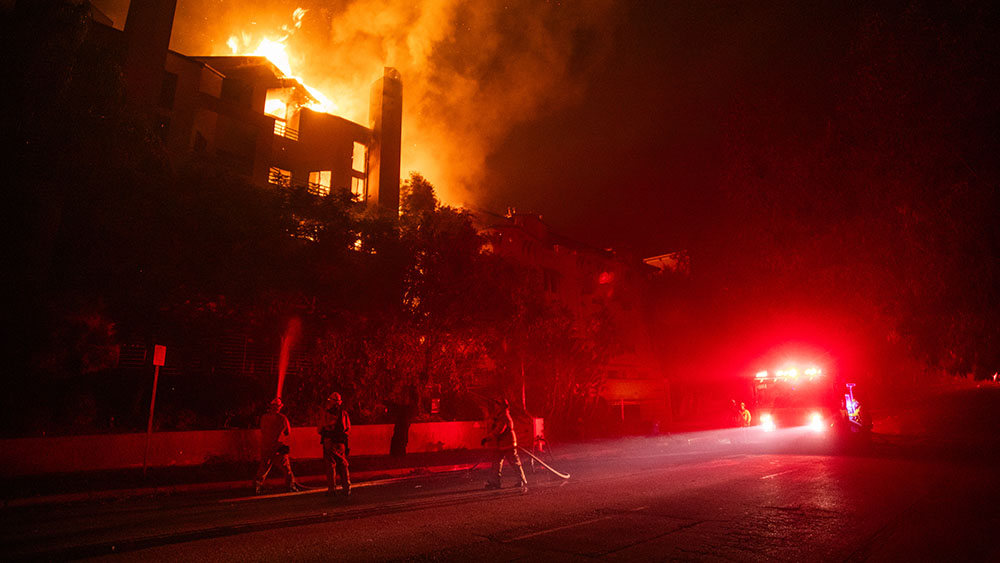- A massive fire erupted at California’s Moss Landing Power Plant, a major battery storage facility, forcing over 2,000 residents to evacuate.
- Toxic smoke from the lithium-ion battery fire prompted highway closures and evacuation orders, with firefighters allowing the blaze to burn out due to its intensity.
- Lithium-ion batteries, critical for renewable energy storage, pose significant fire risks, releasing flammable gases and hazardous chemicals when damaged.
- This is the third fire incident at Moss Landing since 2021, raising concerns about the safety of large-scale battery storage facilities.
- The fire highlights challenges in California’s green energy transition, emphasizing the need for stricter safety measures in battery storage technology.
A massive fire erupted Thursday at one of the world’s largest battery storage facilities, the Moss Landing Power Plant, forcing the evacuation of more than 2,000 residents and raising urgent questions about the safety of lithium-ion batteries used to store renewable energy. Located about 77 miles south of San Francisco, the facility, owned by Texas-based Vistra Energy, houses tens of thousands of lithium batteries critical to stabilizing California’s power grid.
The fire, which began in the 300-megawatt Phase I energy storage facility, sent toxic smoke billowing into the air, prompting local authorities to issue evacuation orders and close nearby highways. Firefighters opted not to engage directly with the blaze, instead allowing it to burn out on its own due to the extreme difficulty of extinguishing lithium battery fires.
“There’s no way to sugarcoat it. This is a disaster, is what it is,” Monterey County Supervisor Glenn Church told KSBW-TV.
Why lithium battery fires are so dangerous
Lithium-ion batteries, while essential for storing energy from renewable sources like solar and wind, pose unique fire risks. When damaged or exposed to high temperatures, they can release flammable gases and burn uncontrollably for days. The U.S. Fire Administration warns that these fires can also expose firefighters to hazardous chemicals, making them particularly challenging to manage.
This isn’t the first time the Moss Landing facility has faced such an incident. In 2021 and 2022, fires broke out due to malfunctions in the fire suppression system, causing damage to some battery units. Despite these setbacks, the plant has continued to play a pivotal role in California’s push toward a greener energy grid.
The Monterey County Sheriff’s Office issued evacuation orders for areas surrounding the plant, including Moss Landing, Molera Road, and Monterey Dunes Way. The Castroville Recreation Center was designated as a temporary evacuation point, though most residents sought shelter with friends or family.
“Our top priority is the safety of the community and our personnel, and Vistra deeply appreciates the continued assistance of our local emergency responders,” said Jenny Lyon, a spokesperson for Vistra Energy.
The North Monterey County Unified School District closed all schools and offices Friday due to the fire, affecting more than 4,500 students. Highway 1 and other nearby roads were also shut down, further disrupting daily life in the region.
A setback for California’s green energy goals
The fire at Moss Landing underscores the challenges of relying on lithium-ion batteries for large-scale energy storage. While these batteries are touted as a key component of the transition to renewable energy, incidents like this highlight their potential dangers.
California, a leader in green energy initiatives, has faced criticism for its rapid adoption of battery storage technology without fully addressing safety concerns. In 2023, Gov. Gavin Newsom signed a bill mandating stricter safety protocols for battery storage facilities following a fire at another plant. However, the Moss Landing incident suggests more work is needed to ensure these facilities can operate safely.
As the fire at Moss Landing continues to burn, questions remain about the long-term viability of lithium-ion battery storage as a cornerstone of renewable energy infrastructure. While the technology offers significant benefits, its risks cannot be ignored. For now, the focus remains on ensuring the safety of residents and first responders, but the incident serves as a reminder of the complexities and challenges of achieving a sustainable energy future.
Sources for this article include:
